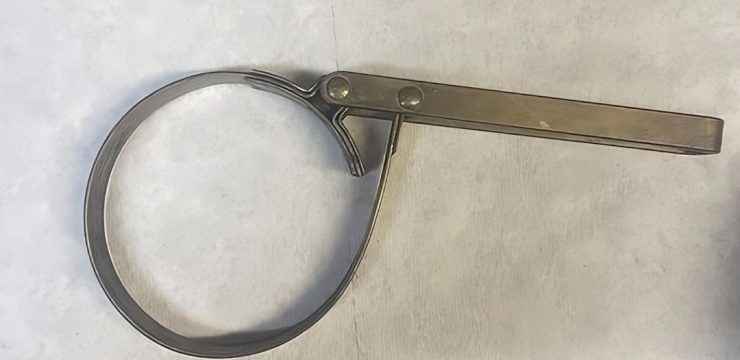In the fast-paced world of modern technology, vintage tools like the soldering iron hold a special place. From electronics and metalwork to jewelry making, this tool has evolved but never lost its appeal. The enduring craftsmanship of the soldering iron continues to inspire professionals and hobbyists alike, making it a staple in many workshops.

A Brief History of the Soldering Iron: From Ancient to Modern
The Beginnings of Soldering in Ancient Civilizations
The soldering iron’s origins date back to ancient Egypt, Greece, and Rome. These early civilizations relied on basic soldering techniques, using heated metal rods to fuse materials like gold, silver, and copper. The main applications included crafting jewelry, weapons, and intricate tools. As society advanced, so did the demand for more precise and versatile tools, particularly during the Industrial Revolution.
The Introduction of Electric Soldering Irons
In the late 19th and early 20th centuries, as electrical industries expanded, so did the need for more precise soldering tools. Non-electric soldering irons, heated over open flames, were common but lacked control. This changed in 1921 when Ernst Sachs developed the first regulated electric soldering iron, allowing for consistent heating. This innovation revolutionized industries by improving the precision and reliability of electrical component assembly.
The Role of the Vintage Soldering Iron in Craftsmanship
Electronics: Building Connections That Last
The soldering iron became crucial in the early electronics industry. It enabled craftsmen to create stable connections between wires and components using a soft metal alloy like tin and lead. Soldering circuit boards, radios, and televisions relied on the precision that this tool provided. The craftsmanship required to make these connections ensured that early electronic devices operated smoothly and reliably.
Beyond Electronics: A Tool for Art and Craft
The versatility of the soldering iron extended beyond electronics. Artists and jewelers used it to craft intricate designs in metalworking, and stained glass artisans relied on soldering irons to join their pieces together. The precision needed for this delicate work demonstrated the tool’s artistic and functional value.
Why Craftsmen Still Turn to Vintage Soldering Irons Today
Despite the availability of modern soldering tools, many craftsmen continue to choose vintage models. But why?
Durability and Craftsmanship: Built to Last
Vintage soldering irons were built with longevity in mind. The materials used in their construction—often heavy-duty metal tips and durable wooden handles—ensured that these tools could withstand years of continuous use. Many vintage models outlast their modern counterparts, which are often built for convenience rather than durability.
Heavier Tips for Consistent Heat
One of the key advantages of vintage soldering irons is their ability to retain heat for longer periods. The heavier metal tips used in vintage models make them ideal for tasks that require prolonged heat application. This is particularly useful in metalworking and automotive repair, where extended soldering times are common.
Hands-On Experience: Why Vintage Tools Feel Different
Craftsmen often talk about the tactile experience of using a vintage soldering iron. Unlike modern digital tools that rely on automated settings, vintage irons offer a more hands-on approach, requiring skill and experience. This connection between the user and the tool is something that many professionals and DIY enthusiasts appreciate.The Evolution of Soldering Techniques: Bridging the Gap Between Past and Present
Modern Soldering Irons: Precision and Technology
Modern soldering irons come with a host of advanced features. Precise temperature control, ergonomic designs, and interchangeable tips have made soldering easier and more efficient. These innovations have expanded the tool’s applications, from electronics repair to intricate metalwork and art.
Vintage Soldering Irons: Reliable Simplicity
While modern tools boast technological advancements, many craftsmen still value the simplicity and reliability of vintage soldering irons. These tools may lack digital temperature controls, but their straightforward design and consistent performance make them a favorite for certain tasks, especially where precision is essential.
Collectors and Hobbyists: The Appeal of Vintage Tools
Historical Value: A Link to the Past
For collectors, vintage soldering irons represent a tangible connection to the early days of electrical engineering and metalworking. These tools played a pivotal role in shaping industries and are cherished not only for their functionality but for their historical significance.
A Growing Trend Among DIY Enthusiasts
In the DIY community, vintage tools have gained a cult following. Many hobbyists seek out older models for their projects, valuing the craftsmanship and hands-on control they offer. The resurgence of interest in retro items has brought vintage soldering irons back into the spotlight.
The Timelessness of Soldering Irons: Why They Remain Relevant Today
Enduring Appeal in Electronics and Craftsmanship
The soldering iron, particularly in its vintage form, remains relevant in a wide range of fields. From repairing electronics to crafting jewelry, this tool continues to prove its value. Even as modern technology evolves, the essence of the soldering iron—a tool that joins materials with precision and care—remains unchanged.
Vintage Models: A Testament to Quality Craftsmanship
While modern soldering irons may offer efficiency and precision, vintage models stand as a testament to quality craftsmanship. These tools have not only survived but thrived in an age of rapid technological advancement, proving that some tools never go out of style.
The Lasting Legacy of the Vintage Soldering Iron
The vintage soldering iron’s journey from ancient civilizations to modern-day workshops tells a story of innovation, craftsmanship, and durability. Whether you’re a collector, a craftsman, or a DIY enthusiast, these tools continue to inspire and perform. As technology continues to push forward, the simplicity and reliability of vintage soldering irons remain a reminder that sometimes, the best tools are the ones that have stood the test of time.





